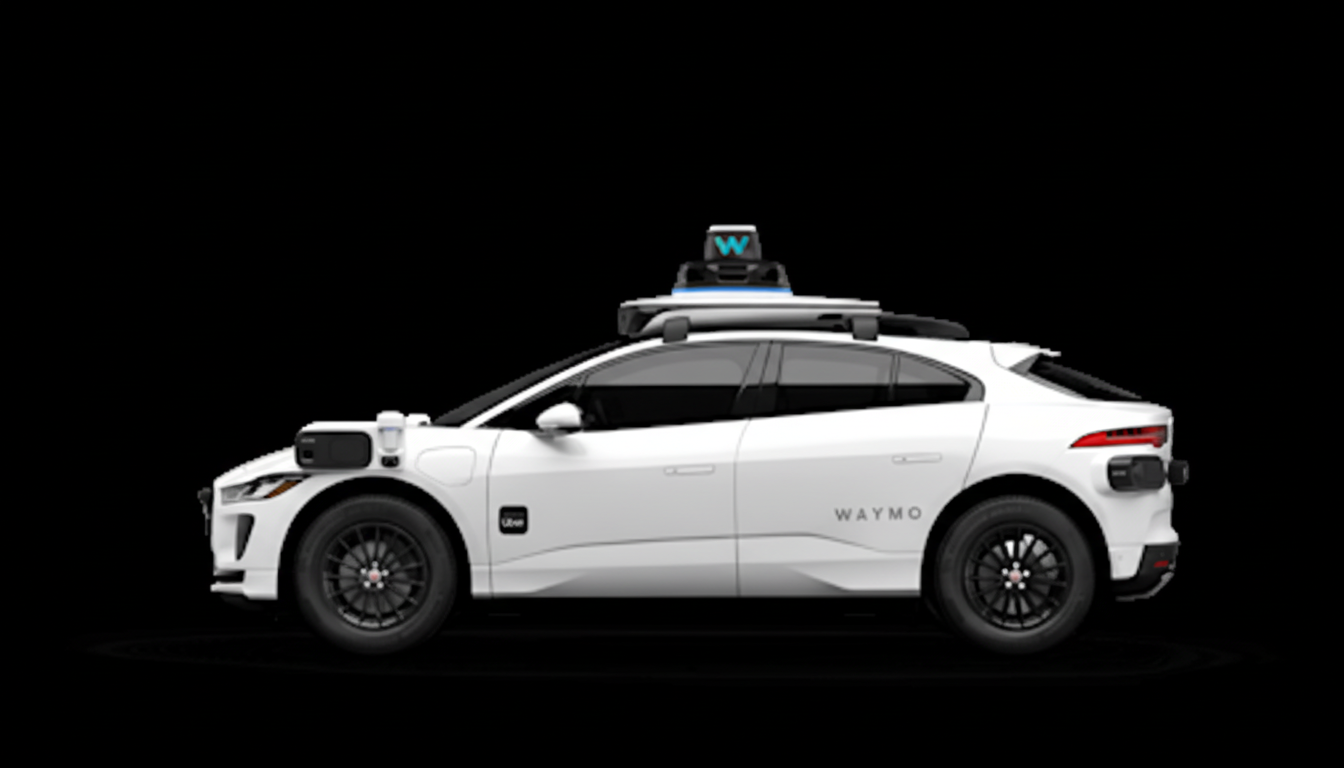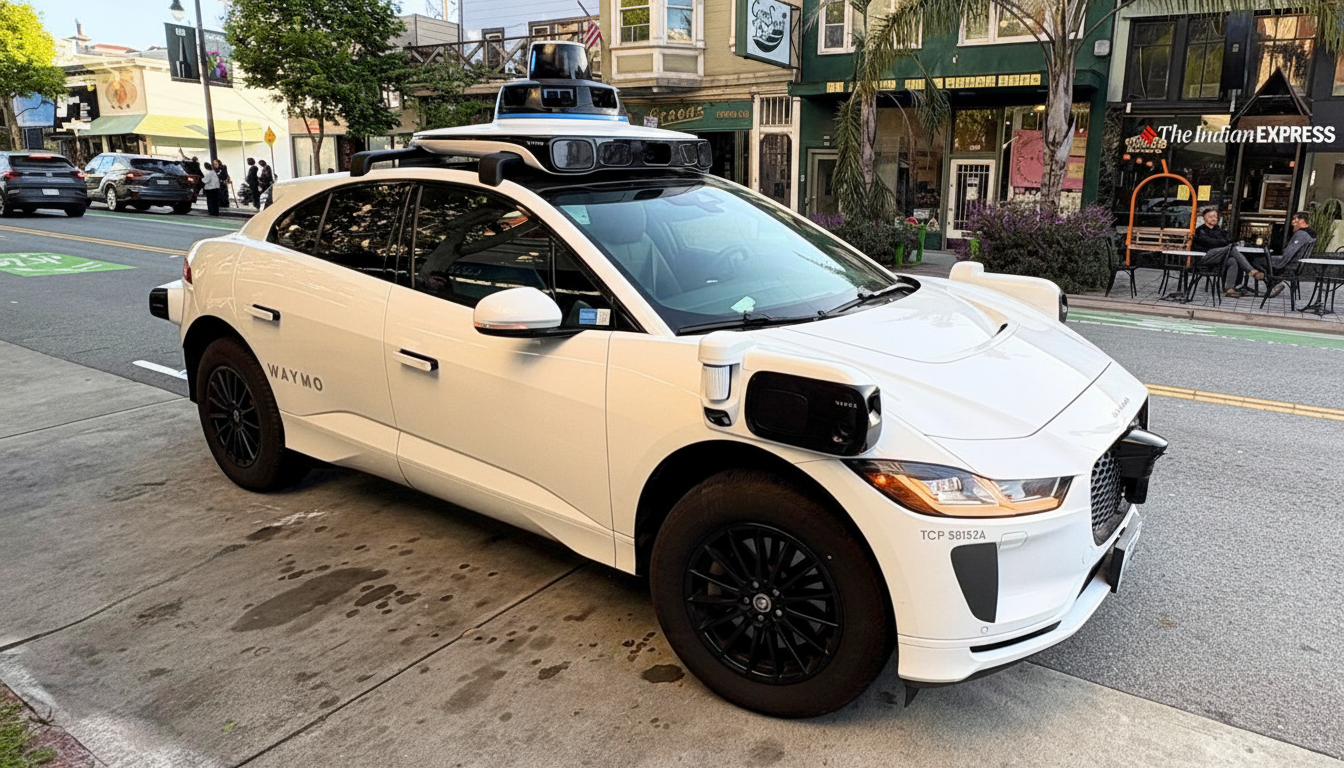I was fed up with chatbots that hallucinate, butter you up and then miss the point. But one driverless ride across town jolted me out of my stupor. Watching a robotaxi weave through city traffic, signal cleanly and deliver me to my destination without drama did more to alter the way I see AI than spending a year testing conversational models ever could.
A ride that reset expectations about autonomy
Ordering the car was like ordering any ride-hail: open the app, pin a drop-off location, confirm. The difference arrived curbside. A Jaguar I-Pace with a halo of sensors glided up, its cameras and lidar towers advertising that this was no human-driven Lyft in disguise. I unlocked, opened, got in the back seat and hit Start Ride.

The route ETA was longer than a human driver’s — no surprise in areas where the service mainly steers clear of freeways. High-speed roads are simpler to perceive but less forgiving when things go wrong, and the operator’s decision to prioritize surface streets has a safety-first ring. (Crash severity has been tightly correlated to speed by the National Highway Traffic Safety Administration, and staying clear of interstates is a crude but logical risk control.)
Did it matter? Not much once we were moving. The car primly executed a right-on-red, waited for a safe gap and then joined the flow without the shy braking you’ll get in some early autonomy systems. It anticipated merges, yielded predictably and generally acted the way you wish you did as a polite driver.
How it drove and how it felt inside the robotaxi
It wasn’t swagger that amazed me; it was form.
When a turning car obstructed our lane, the robotaxi veered left across the center line just far enough to clear it and then pulled back — not recklessly or without warning, nor inscrutably or statistically, but decisively humanlike. The cabin UI put the logic into practice, showing us lanes, bikes, and people so you knew why it was waiting or going.
The social atmosphere changes, too. To the rear, with no driver, is a small living room. That’s a bonus when you think of it that way, until you consider the flip side: interior and exterior cameras are rolling. The company says that it keeps riders safe and enforces rules, but it also means you behave as though an HR department might audit the ride. Privacy hasn’t disappeared, it’s just a negotiation.
Safety and reliability in context for autonomous rides
Robotaxis exist under a magnifying glass, and with good reason. The California Public Utilities Commission oversees paid autonomous service while the state DMV and federal NHTSA review incidents and software updates. With a previous operator sidelined by a high-profile pedestrian injury in 2023, one thing is clear: It’s not just advisable to have been cautious — it’s existential.

Waymo’s publicly released safety analyses compare its crash rates to the human baselines and indicate significant reductions in injury-causing crashes in like scenarios. It’s still early for independent benchmarks, but the bar is easy to see. The United States had approximately 41,000 roadway deaths last year, according to the NHTSA’s preliminary estimates, and a fatality rate of about 1.26 per 100 million vehicle miles traveled. If autonomy can bring those numbers down, even incrementally, the benefit is huge.
Reliability still has edges. Construction, emergencies and improvised road rules may require reroutes or remote guidance. The superior systems show their doubts and then play it safe. What I witnessed — that’s precisely it: less heroics and more patience.
Cost, convenience and coverage across the service
On price, my rides were a few dollars less than matched UberX trips off-peak, and then started to overlap during busier times. Pickup might take you longer and, in some cases, require a few blocks of walking to approved locations, as not every curb is cleared for this service. Airports are a coin-toss of whether you can get a ride or not (it depends on your local permissions). Those friction points matter for people with disabilities, and they will define how broadly this feels usable, instead of just cool.
By contrast with advanced driver-assistance in personal cars — the hands-free highway systems offered by Ford, GM, Mercedes and others — the robotaxi felt less harrowing. Partial automation leaves you in a state of limbo of “be ready but don’t intervene,” which can be taxing cognitively. Full-service autonomy, if done well, takes that half-duty away and returns your mental bandwidth to converse, read or just gaze out the window.
Public trust remains brittle and what might come next
Public sentiment is still brittle. In 2023, 68 percent of drivers were terrified of fully self-driving cars, a rise amid a string of news-making accidents. Trust isn’t going to be argued into existence; it’s going to be built block by boring block with safe trips, transparent reporting and responsive regulators.
There are cultural trade-offs, too. Take the driver away and you deduct small talk, requiem remarks, a wafer of civic interaction from everyday life. That might be a relief when it’s been a long day; for some of us, maybe it propels us more firmly into isolation. A healthy street culture likely requires both options — so that human drivers can roam around where connection is the point, and robotaxis can prowl for efficiency and safety.
I wasn’t expecting a weekend smothered in AI to change my views on it. Seeing a machine work its way through imperfect streets — patiently, and without fear or anxiety — felt like a real milestone, not just another product demo. If this is the edition that arrives before the marketing slogans, then perhaps we are finally living through the next chapter of AI — quietly, one seamless ride at a time.

